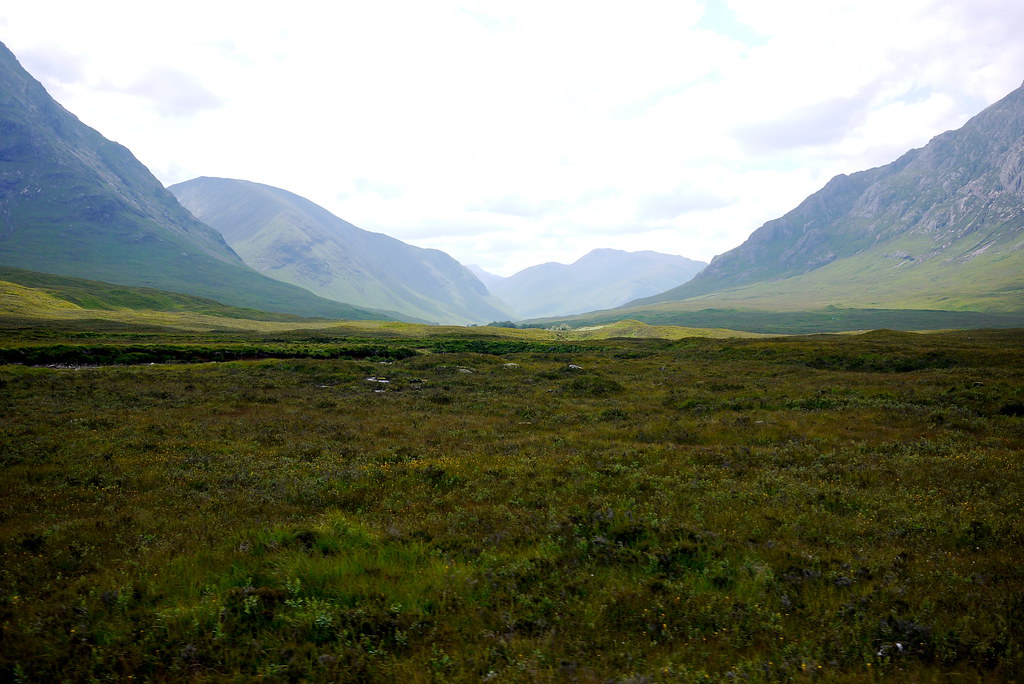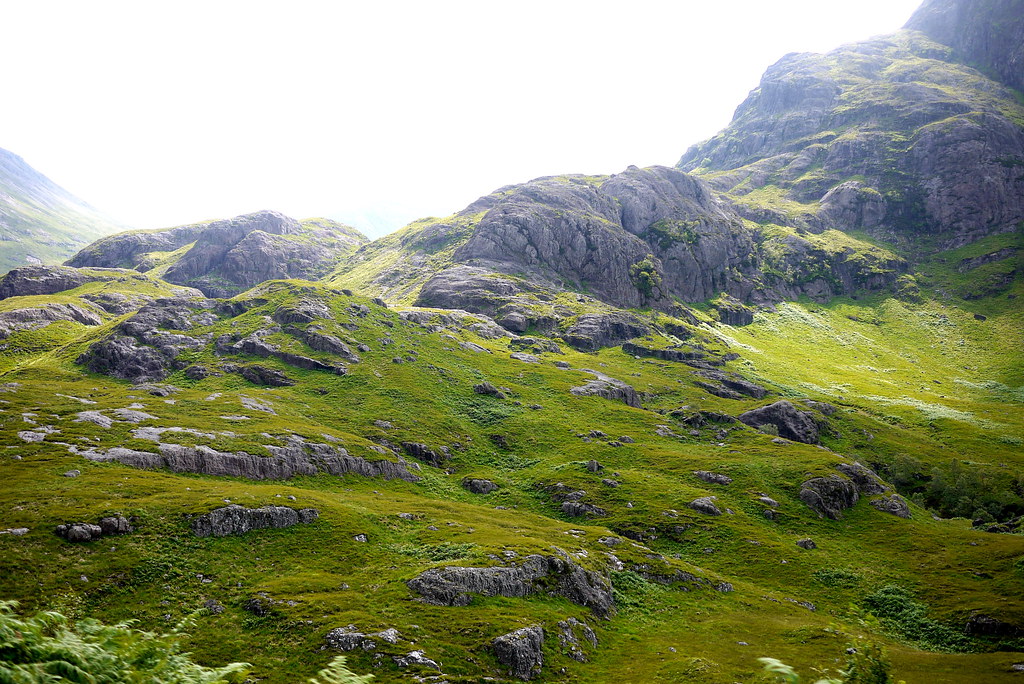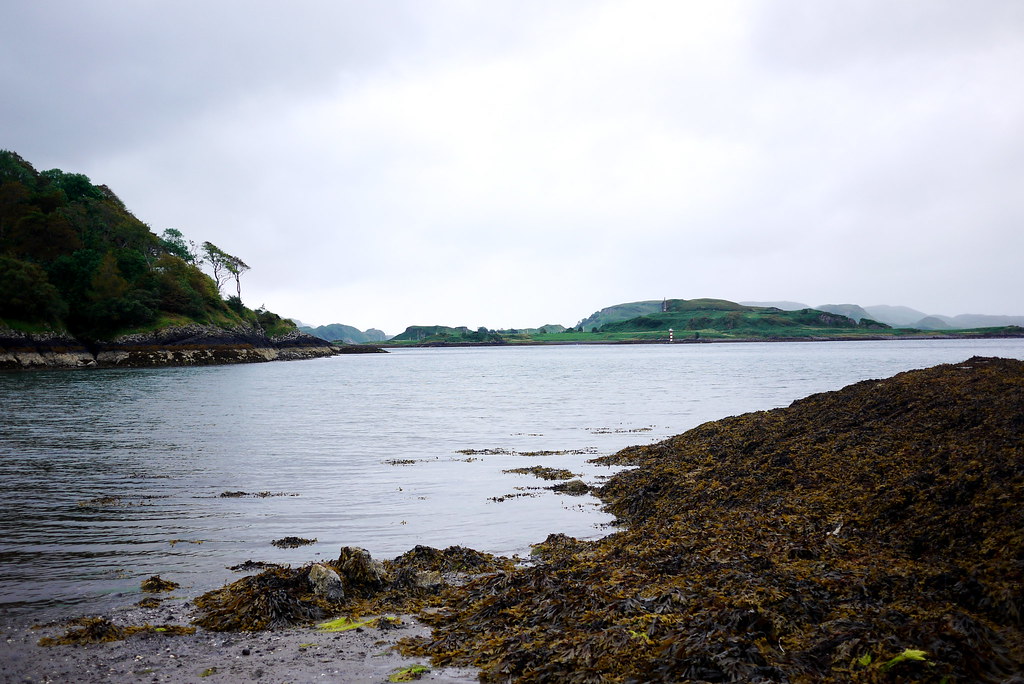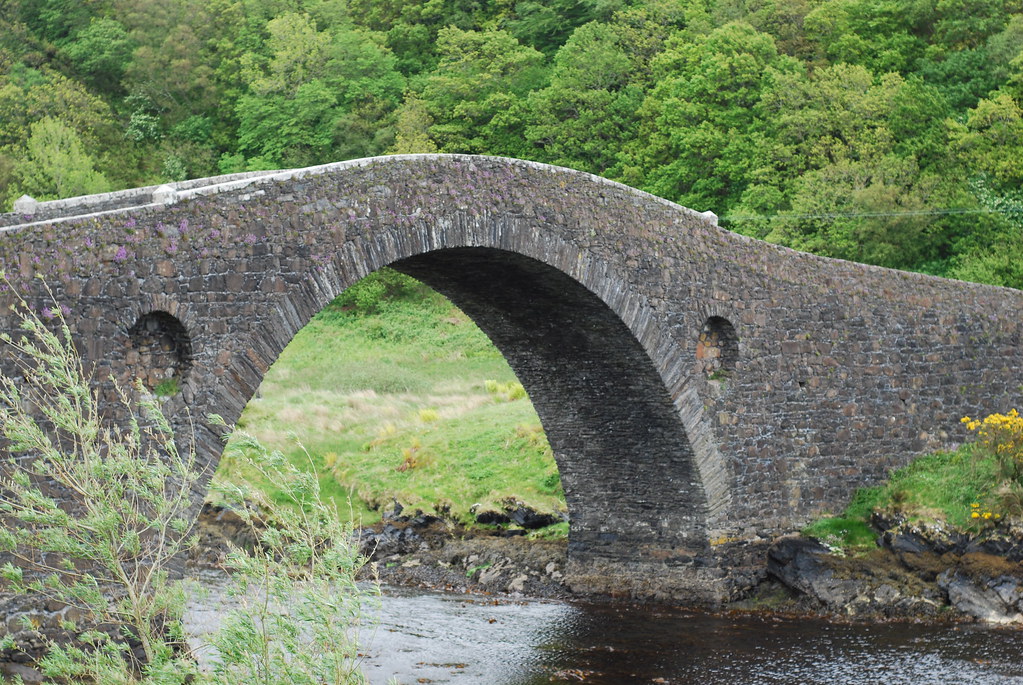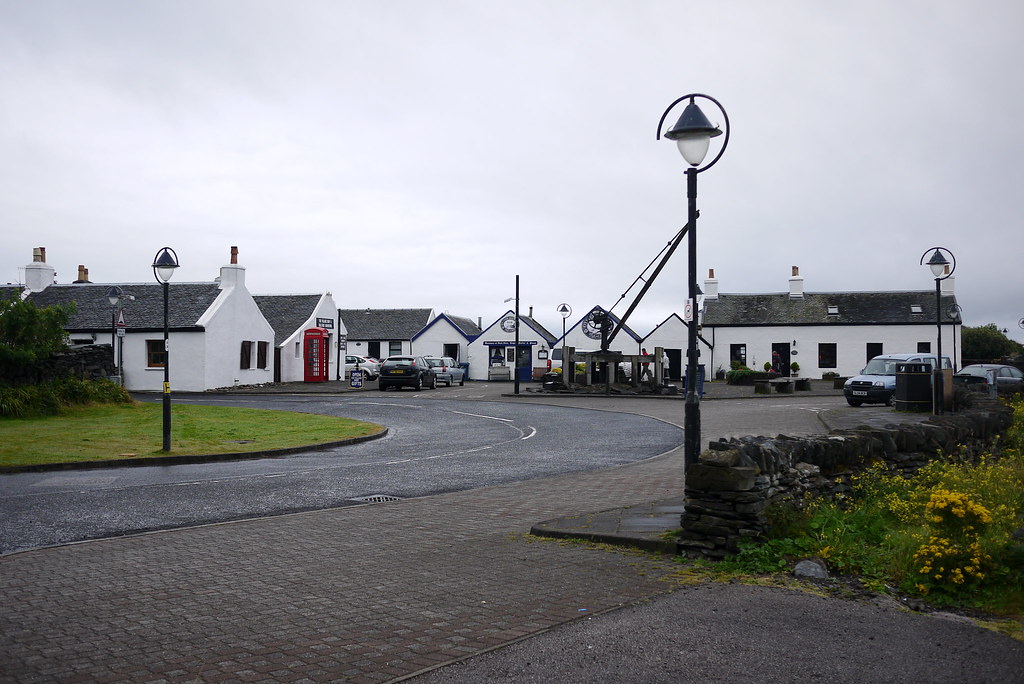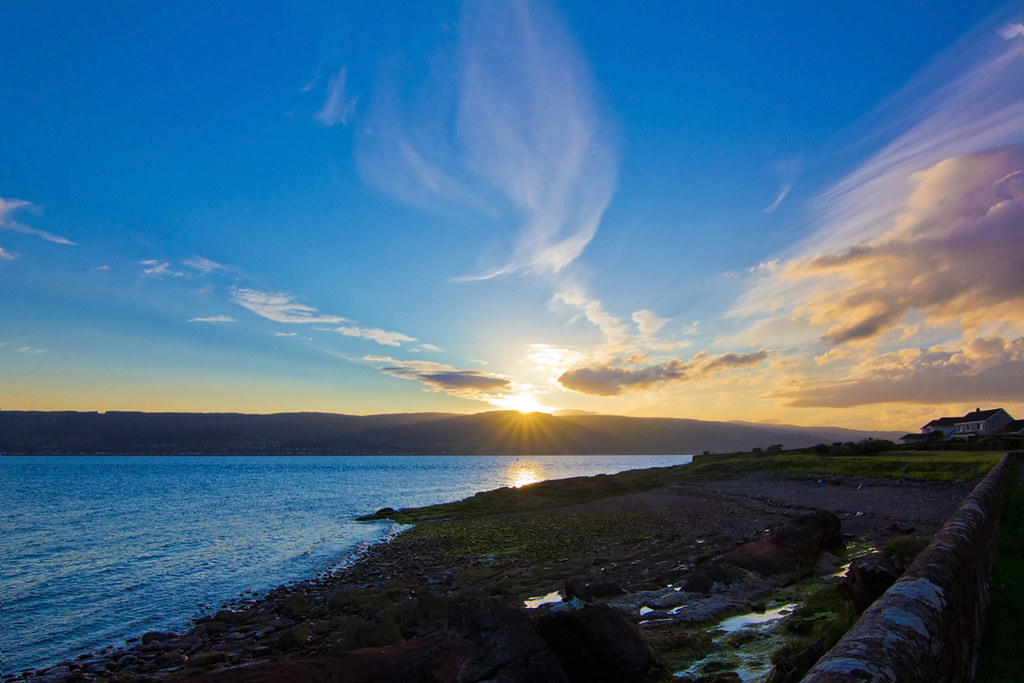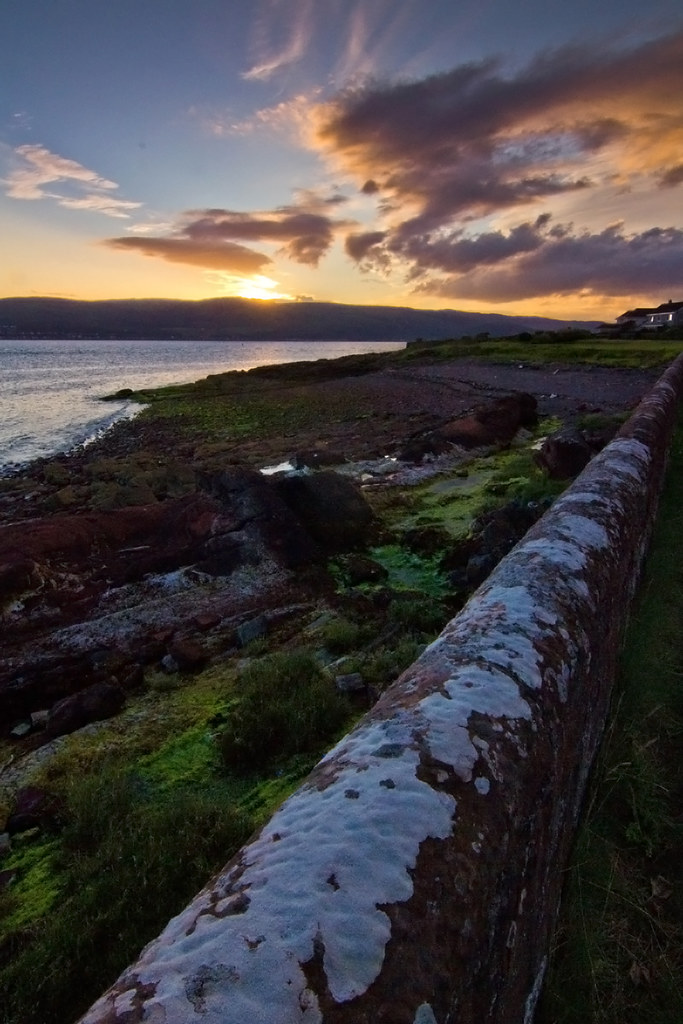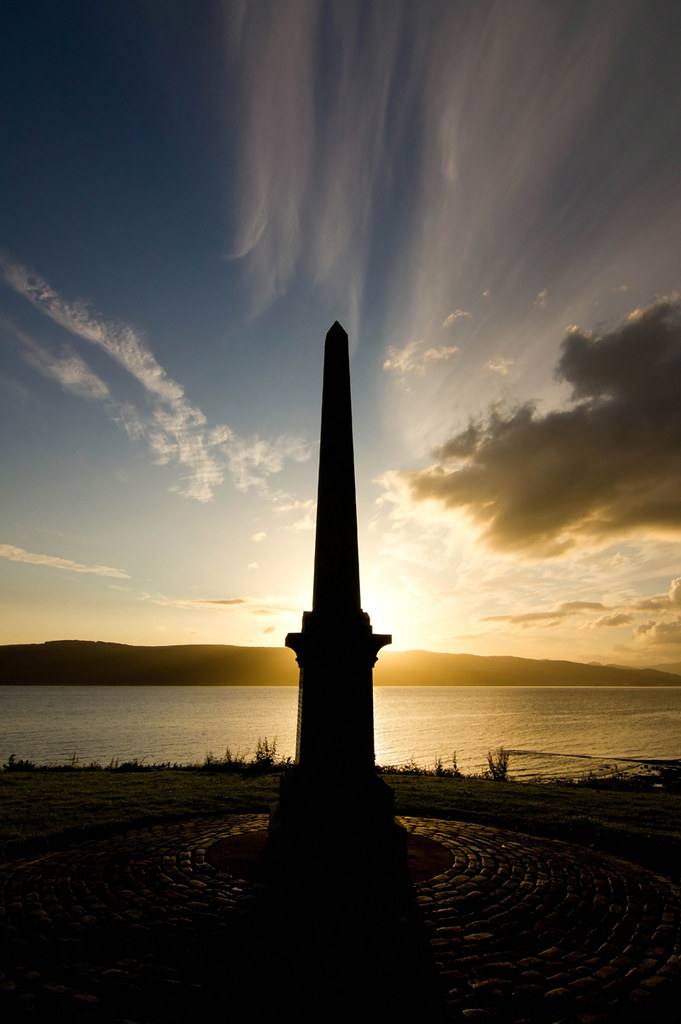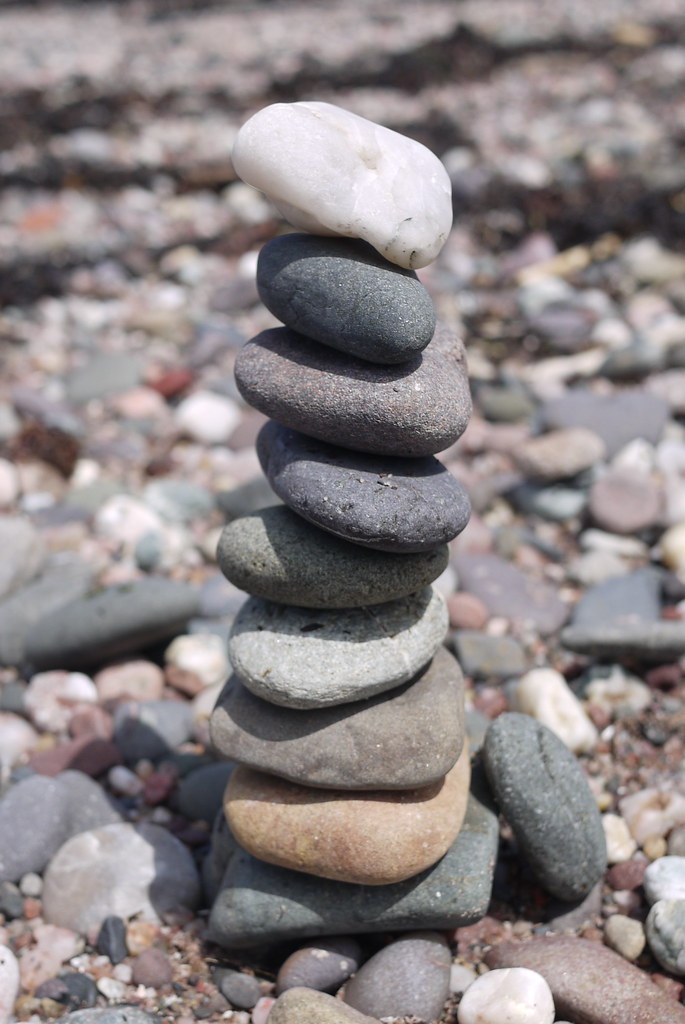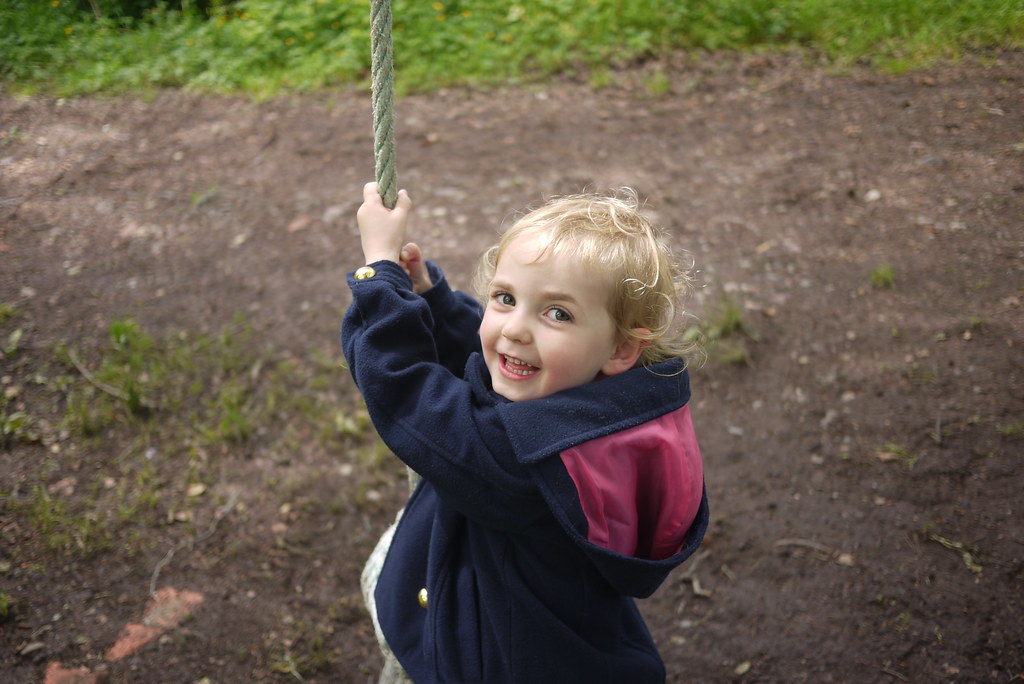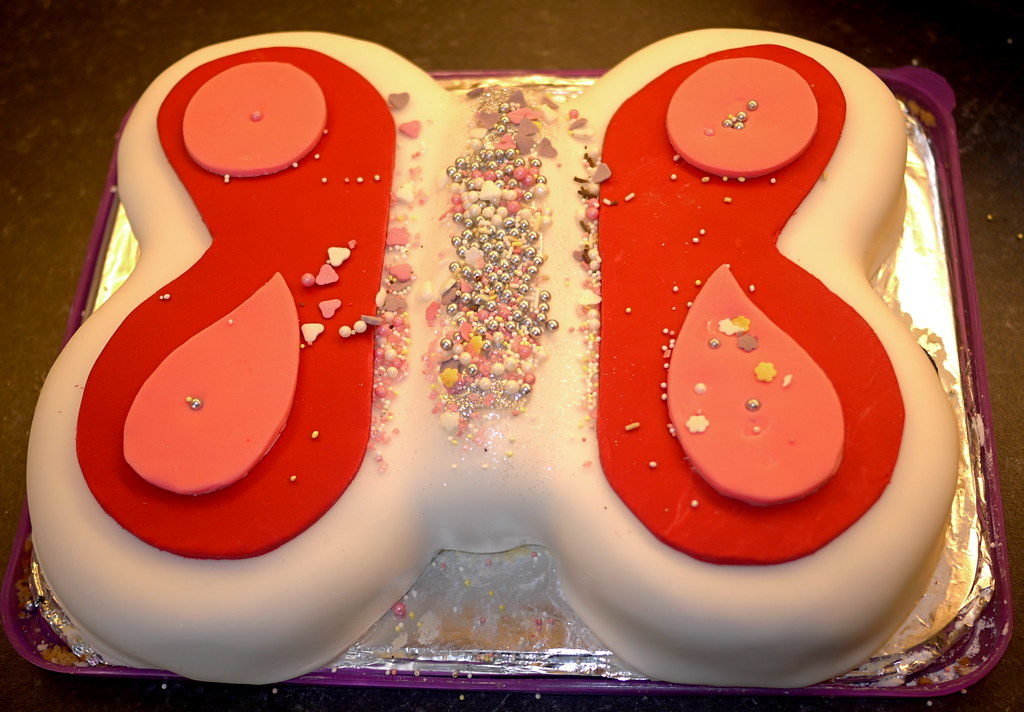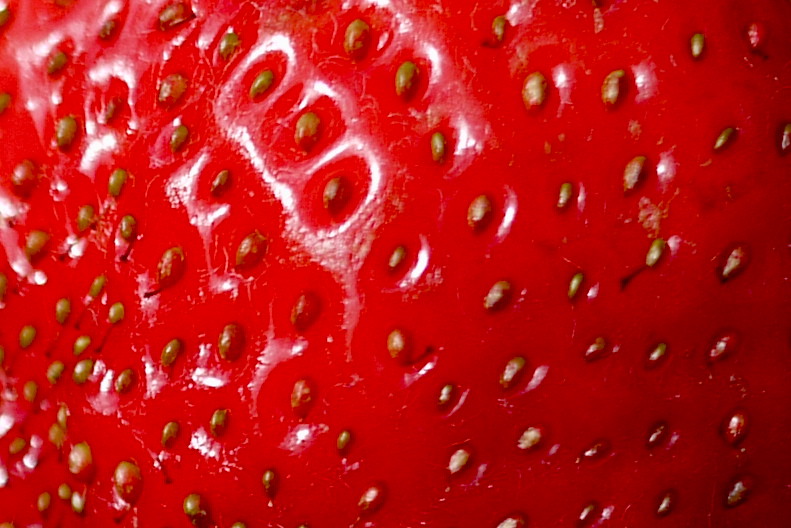A very happy Lùnastal to you all!
I'll be waiting for my blueberries to ripen in the garden before I start my own celebrations, like I usually do, and it looks like they'll be at least another week yet. In the meantime I've been doing a few bits and pieces in preparation - some pictures with the kids, along with planning for things the kids and I can do together - making butter, some shortbread, cranachan and bannocks, and having a proper go at making some Lùnastal crowdie this time, and thinking of playing some games we can all play (nothing too physical for me, though. Hmph).
Anyway, during the summer holidays we were planning a few outings at least, with a holiday up in the far north of Scotland, and a trip down to England to see my family. An unexpected tax bill has pretty much scuppered those ideas, but seeing as my husband got some camping gear for his birthday we decided to go on a short camping trip this weekend - just an over night stay, but that suited me fine considering we were kind of experimenting with how my back would tolerate a long journey and sleeping in a tent (the answer being, the tent was fine, but not so happy with being stuck in a car).
We were originally thinking of heading to Perthshire so I could indulge myself with a trip to Tigh nam Bodach (perhaps my husband thought I might finally shut up about it...); but with the kids in tow and it being situated in a fairly remote location, and the uncertain back factor, a trek to those parts seemed doomed to wailing from tired children, or me. Instead we decided to head to Glen Coe, with the tent, the kids and the dogs in tow, and so we set off on Saturday morning in glorious sunshine.
The roads were busy through Loch Lomond, but the traffic thinned out considerably once we turned off onto the road to Glen Coe and we had a good run. The route takes you through Rannoch Moor - which is just beautiful. Empty though the roads were, it seemed it was mainly because everyone had stopped in the few parking places available. We couldn't stop and take a good look around, so I had to take a few snaps out of the window along the way:
The Rannoch Moor is the start of the Highlands 'proper' - technically I think the Highland Line starts at Ben Lomond, but the sign welcoming you to the Highlands is situated right as you enter the moor. Here's another view:
Aaaand:
As you get to the end of the moor you enter into Glen Coe, and the landscape closes in, with just a road winding through the mountains:
Some very fine mountains, too:
We pitched our tent at the campsite next to the Glen Coe visitor centre, and headed off to find a park for the kids to run off some steam before dinner and then bedtime. My husband managed to rip his only pair of shorts while he put the tent up, so there was a stop to find a new pair of trousers, too...
In the evening, I walked the dogs along an old path that eventually led into Glen Coe village; along the way I stumbled across the remains of an old blackhouse (and kicked myself for not having my camera). According to the information board, nine trees were planted around the house to commemorate the nine people were killed there during the Glen Coe massacre, but legend has it that there was a tenth - a small boy, whose terrified screams made a soldier pause and think twice about killing the poor child in cold blood. The soldier decided he couldn't bring himself to do it, so cut one of the boy's fingers off instead, and wiped the blood on his sword to convince his superior the boy was dead. Years later, the old soldier returned to the glen and stopped for a drink at the pub. He got drunk and began rambling on to the bar man about his regrets at the terrible things he'd done during the massacre, but for the one life he saved - the wee boy, whose finger he'd cut off. The bar man listened intently, and then, when the old soldier had finished, he held up a hand and showed a finger was missing.
I wonder how many stories like that there are.
After a very uncomfortable night, thanks to a slowly deflating mattress and being punched in the face twice by Rosie's nocturnal fidgeting, we got up bright and early and had our breakfast, packed up, and began heading home. The weather had taken a turn for the worse during the night, so it was mostly damp and dismal today. We took a detour along the coastal route, though, taking in Oban and stopping at a beach near Dunollie castle, so the dogs could get some exercise:
And then we headed to the Isle of Seil. We went there a couple of years ago, but that time we only went over the bridge and had a brief stop before heading back. This is the bridge (taken on our last trip when the weather was only a little better than this time):
The Atlantic Bridge in fact - the only bridge to cross the Atlantic Ocean. As you can see, it's not very wide at this point! Seil itself is a beautiful island - the dismal weather kind of made it even more so, in a way. The low cloud gave it an ethereal feel. On our travels we saw another abandoned house - a little like the one I saw the day before, but I think this one might be a little more recent:
We stopped for lunch in a village (I can't remember the name of it, but the locals call it Easdale - which is actually the island where slate is quarried right opposite); lunch was goooood, and the village itself couldn't really get much more Scottish:
Replete with ye olde phonebox. Then, after another dog walk, it was time to make a push for home. We made our way through Kilmartin Glen and passed Dunadd (one of my favourite places, which we also visited a few years ago), but it was getting too late to stop if we wanted to get back home for dinner and time to let the kids decompress before bed. It was nice to see it, though, albeit briefly.
The best thing, though - the Highlands in the height of midgie season, and no midgie bites. All thanks to this stuff. Seriously. It's like a miracle.
Sunday, 31 July 2011
Thursday, 21 July 2011
Book Review: Highland Heathenry
Update: Please note that this book is no longer available.
Highland Heathenry: Ritual Formula for Gaelic Heathens
Ikindé Skréja Ominnsaer
Finally, another offering for a Celtic Reconstructionist's bookshelf; like the last one I reviewed that was aimed at such an audience, I bought it through Lulu, so it's a self-published work. And like the previous book, a large part of this one focuses on material from the Carmina Gadelica. Where they differ is that while Morgan Daimler's book perhaps offers more scope in the amount of charms offered, Highland Heathenry offers more detail on ritual outlines as a whole, as well as both English and Gàidhlig versions of the charms that have been chosen for the book, and reworked and 'de-constructed' for a CR audience.
The book is aimed primarily at the beginner, or anyone looking for an introduction to ritual within CR - specifically Scottish (Gàidhlig) practice. It's very short, which should be a good thing for anyone looking for something that isn't too overwhelming; the content presented here is clear and to the point, beginning with clear definitions for certain words and terms that the author uses throughout, and the reader is encouraged to go and do their own research as well.
The layout is clear and the use of some of the illustrations from the Carmina Gadelica gives a nice touch to the overall look and feel of the book. It's a little smaller than A4 in size, and considering the fact that many of the charms and rituals offered throughout the book cover more than one page, the size helps if you want to sit down and study what's going on here without having to constantly flick through.
Where the book falls down, I think, is in some of the details. Some are minor and probably more a matter of taste - I would quibble that for a CR book, 'heathenry' isn't the most appropriate term to use because (as far as I'm aware) most associate it with a specifically Norse practice. It would also have been nice to see more thorough and consistent referencing throughout (though there is some).
It has to be said that there are some fairly fundamental problems to be found here as well, that go beyond quibbles. I think this is truly unfortunate; what the book aims to deliver is good, it's just the problems all add up to having to question whether or not the book as a whole is workable without at least some major revision. Some of the information offered is just inaccurate - for example, the bile is a sacred tree that stands at the heart of a tuath's territory, not "a pile of stones with a flat table-topper slate." I think what's being referred to here is actually a dolmen, and these are common to Ireland (and neolithic), but not Scotland, and nor is there any evidence that they were used as altars by the Celts. There is also reference to the arms of the triskele representing the Dagda, Lugh, and Ogma, and also the cycle of life from childhood, adulthood, to old age, which is based on a questionable resource; the meaning of the triskele is by no means known for certain, although there are many modern interpretations. As UPG these are not something I can debate, but here they are apparently presented as fact, and that's where the problem lies.
The inclusion of Rhiannon and 'Toranis' as deities in a book that encourages specifically Gaelic practice, and also their assignations as deities of particular elements (albeit in a Gaelic elemental context, not Classical) is completely out of place to me, as is the use of the Welsh names for the solstices and equinoxes - Alban Arthuan, Alban Eiler, Alban Heruin, and Alban Elved. I suspect these names may have origins in modern druidic practice as well, which puts them doubly out of place.
A fair few of the charms will be ones that most recons will already be familiar with and are likely to have adapted for use themselves, so it's good to see Gàidhlig versions of these readily on offer and available for a reconstructionist audience. There are some that I find problematic, though, and at least one of them appears in a completely different context than it was originally meant; for the Bealltainn celebrations, Carmichael's Red Water Charm has been used as a 'Bealltainn exorcism' in the morning. As far as I'm aware, exorcisms are not a pre-Christian concept, and the charm itself is originally meant to be a healing charm for kidney stones. The use of the charm and the idea in general just seem thoroughly out of place, even inappropriate here.
At times, the Gàidhlig that's offered is also a little problemmatic. Spelling is a recurring problem - mixing both old and modern orthography, as well as a lot of spelling mistakes, and some errors are downright unfortunate (the Diesel Turn, instead of the the Deiseil Turn), but not something that couldn't be corrected in further editions with thorough proofing. As it is, though, while these will be easily spotted by anyone who knows what they're looking for, it will make the job of reading through and correctly pronouncing certain parts for others, who may be less advanced or confident in their understanding of Gàidhlig, more difficult.
However, while I can't claim to be advanced in my studies of Gàidhlig, I suspect that the problem may go deeper than spelling and orthography, with some parts of the Gàidhlig itself. For one, I have reservations with the use of the word 'deathachan' as the Gàidhlig for 'gods'; as far as I'm aware, the accepted plural is 'diathan,' and as far as I can tell the only source for 'deathachan' having this meaning is Alexander Carmichael himself. While it's possible this is an archaism, I suspect given the context of Carmichael's use of the word that it's more likely to be his own extrapolation, and so the accuracy of it seems questionable. Over all, it gives cause for concern about the reliability of the transliterations here.
Books that are aimed at a purely Celtic Reconstructionist audience are still very thin on the ground, and like the last one I reviewed this one is self-published; given the fact that the CR community is probably still very small, and self-publishing allows greater editorial control over the content without having to compromise with a publishing house, I think this is the way that most CR books in future will go. The main downside to this is that proofreading is often an issue, and it puts the author at a disadvantage in terms of advertising their work compared to an established publishing house, and many must also rely solely on online sales rather than those from a bookshop; maybe most people buy their books online nowadays anyway, but there are certainly those who would still prefer to be able to look at something before they buy it (edit for clarity: though in this instance there is a preview option for the introduction and blurb).
As such, reviews like this are certainly going to be one way that any self-published author will hope to garner at least a few sales. I do regret that I can't give this book a better review, but when all is said and done, I've tried to be honest and objective in what I find just as with any other book I review here. Ultimately, I find that the problems with the book are a severe detriment to what it's trying to achieve. Although over all it's aims are good; I'm just not sure it's quite there.
Highland Heathenry: Ritual Formula for Gaelic Heathens
Ikindé Skréja Ominnsaer
Finally, another offering for a Celtic Reconstructionist's bookshelf; like the last one I reviewed that was aimed at such an audience, I bought it through Lulu, so it's a self-published work. And like the previous book, a large part of this one focuses on material from the Carmina Gadelica. Where they differ is that while Morgan Daimler's book perhaps offers more scope in the amount of charms offered, Highland Heathenry offers more detail on ritual outlines as a whole, as well as both English and Gàidhlig versions of the charms that have been chosen for the book, and reworked and 'de-constructed' for a CR audience.
The book is aimed primarily at the beginner, or anyone looking for an introduction to ritual within CR - specifically Scottish (Gàidhlig) practice. It's very short, which should be a good thing for anyone looking for something that isn't too overwhelming; the content presented here is clear and to the point, beginning with clear definitions for certain words and terms that the author uses throughout, and the reader is encouraged to go and do their own research as well.
The layout is clear and the use of some of the illustrations from the Carmina Gadelica gives a nice touch to the overall look and feel of the book. It's a little smaller than A4 in size, and considering the fact that many of the charms and rituals offered throughout the book cover more than one page, the size helps if you want to sit down and study what's going on here without having to constantly flick through.
Where the book falls down, I think, is in some of the details. Some are minor and probably more a matter of taste - I would quibble that for a CR book, 'heathenry' isn't the most appropriate term to use because (as far as I'm aware) most associate it with a specifically Norse practice. It would also have been nice to see more thorough and consistent referencing throughout (though there is some).
It has to be said that there are some fairly fundamental problems to be found here as well, that go beyond quibbles. I think this is truly unfortunate; what the book aims to deliver is good, it's just the problems all add up to having to question whether or not the book as a whole is workable without at least some major revision. Some of the information offered is just inaccurate - for example, the bile is a sacred tree that stands at the heart of a tuath's territory, not "a pile of stones with a flat table-topper slate." I think what's being referred to here is actually a dolmen, and these are common to Ireland (and neolithic), but not Scotland, and nor is there any evidence that they were used as altars by the Celts. There is also reference to the arms of the triskele representing the Dagda, Lugh, and Ogma, and also the cycle of life from childhood, adulthood, to old age, which is based on a questionable resource; the meaning of the triskele is by no means known for certain, although there are many modern interpretations. As UPG these are not something I can debate, but here they are apparently presented as fact, and that's where the problem lies.
The inclusion of Rhiannon and 'Toranis' as deities in a book that encourages specifically Gaelic practice, and also their assignations as deities of particular elements (albeit in a Gaelic elemental context, not Classical) is completely out of place to me, as is the use of the Welsh names for the solstices and equinoxes - Alban Arthuan, Alban Eiler, Alban Heruin, and Alban Elved. I suspect these names may have origins in modern druidic practice as well, which puts them doubly out of place.
A fair few of the charms will be ones that most recons will already be familiar with and are likely to have adapted for use themselves, so it's good to see Gàidhlig versions of these readily on offer and available for a reconstructionist audience. There are some that I find problematic, though, and at least one of them appears in a completely different context than it was originally meant; for the Bealltainn celebrations, Carmichael's Red Water Charm has been used as a 'Bealltainn exorcism' in the morning. As far as I'm aware, exorcisms are not a pre-Christian concept, and the charm itself is originally meant to be a healing charm for kidney stones. The use of the charm and the idea in general just seem thoroughly out of place, even inappropriate here.
At times, the Gàidhlig that's offered is also a little problemmatic. Spelling is a recurring problem - mixing both old and modern orthography, as well as a lot of spelling mistakes, and some errors are downright unfortunate (the Diesel Turn, instead of the the Deiseil Turn), but not something that couldn't be corrected in further editions with thorough proofing. As it is, though, while these will be easily spotted by anyone who knows what they're looking for, it will make the job of reading through and correctly pronouncing certain parts for others, who may be less advanced or confident in their understanding of Gàidhlig, more difficult.
However, while I can't claim to be advanced in my studies of Gàidhlig, I suspect that the problem may go deeper than spelling and orthography, with some parts of the Gàidhlig itself. For one, I have reservations with the use of the word 'deathachan' as the Gàidhlig for 'gods'; as far as I'm aware, the accepted plural is 'diathan,' and as far as I can tell the only source for 'deathachan' having this meaning is Alexander Carmichael himself. While it's possible this is an archaism, I suspect given the context of Carmichael's use of the word that it's more likely to be his own extrapolation, and so the accuracy of it seems questionable. Over all, it gives cause for concern about the reliability of the transliterations here.
Books that are aimed at a purely Celtic Reconstructionist audience are still very thin on the ground, and like the last one I reviewed this one is self-published; given the fact that the CR community is probably still very small, and self-publishing allows greater editorial control over the content without having to compromise with a publishing house, I think this is the way that most CR books in future will go. The main downside to this is that proofreading is often an issue, and it puts the author at a disadvantage in terms of advertising their work compared to an established publishing house, and many must also rely solely on online sales rather than those from a bookshop; maybe most people buy their books online nowadays anyway, but there are certainly those who would still prefer to be able to look at something before they buy it (edit for clarity: though in this instance there is a preview option for the introduction and blurb).
As such, reviews like this are certainly going to be one way that any self-published author will hope to garner at least a few sales. I do regret that I can't give this book a better review, but when all is said and done, I've tried to be honest and objective in what I find just as with any other book I review here. Ultimately, I find that the problems with the book are a severe detriment to what it's trying to achieve. Although over all it's aims are good; I'm just not sure it's quite there.
Sunday, 17 July 2011
Bits and pieces - links of interest and a new CR book
I'm snagging something from Treasa's blog that I meant to mention ages ago, after she brought my attention to it - the Ulster Institutional Repository. It's an archive of articles and work by researchers at Ulster University, and there's a good section on Irish and Celtic stuff there. There are lots of articles you can download as pdfs, on all sorts of things, although some entries are only references. Hopefully they will add to it, because some of the most interesting ones aren't available, but it's still well worth a look. Treasa's also posted a nice video called Lament by Damien Byrne, which won an award in March - it's a reworking of The Death of Aoife's Only Son.
In other news, I've got a copy of a new CR book on order, called Highland Heathenry by Ikindé Skréja Ominnsaer. It's just out yesterday, and how could I not? My credit card won't be thanking me just now, I'm sure, but the book should arrive sometime next week (while the kids are away - yay, peace and quiet!) and I'll be reviewing it at some point after that, I'm sure. Ikindé's blog is here if you want to check her out.
In other news, I've got a copy of a new CR book on order, called Highland Heathenry by Ikindé Skréja Ominnsaer. It's just out yesterday, and how could I not? My credit card won't be thanking me just now, I'm sure, but the book should arrive sometime next week (while the kids are away - yay, peace and quiet!) and I'll be reviewing it at some point after that, I'm sure. Ikindé's blog is here if you want to check her out.
Thursday, 14 July 2011
Update...
There won't be much chance for writing or research while it's the summer holidays, because with the kids both at home all day I don't have much free time to get on with it. Usually with Tom at school full time and Rosie going to nursery in the mornings, I use my free time while the both of them are out of the house for doing my own thing - often that involves writing. But now there are small children to entertain, and while I can occasionally grab a minute or two for a blog post and whatnot, actual deep thoughts require a bit more concentration to get stuck into things.
As it is then, I've managed to finish my next essay, on the Good Folk - Na Daoine Sìth. A couple of the books I've read recently have had some useful stuff in them, so while they're fresh in my memory I've also taken the opprtunity to add a few bits and pieces to the article on Gods of Landscape and Lore. The main additions are for Donn, Finnbheara, Clíodhna, and Úna, with some further minor tweaks here and there. Likewise, I've added Donn's association as the ancestor of the Maguires to the Gods as Ancestors article, too.
Until I have a bit more free time, or get used to my new routine and don't feel so braindead by the time they've gone to bed, that's probably about it for now. Once I do manage to get stuck back into things again, I'm not sure what I'll be concentrating on as yet. Any thoughts or requests are welcome, though!
PS: According to my stats wotsit, recent searches that have led to people stumbling across the blog here include "cow print dressing gown", "gaelic irish lewd wakes" and "the dangers of becoming a werewolf". For some reason, such diversity amuses me...
As it is then, I've managed to finish my next essay, on the Good Folk - Na Daoine Sìth. A couple of the books I've read recently have had some useful stuff in them, so while they're fresh in my memory I've also taken the opprtunity to add a few bits and pieces to the article on Gods of Landscape and Lore. The main additions are for Donn, Finnbheara, Clíodhna, and Úna, with some further minor tweaks here and there. Likewise, I've added Donn's association as the ancestor of the Maguires to the Gods as Ancestors article, too.
Until I have a bit more free time, or get used to my new routine and don't feel so braindead by the time they've gone to bed, that's probably about it for now. Once I do manage to get stuck back into things again, I'm not sure what I'll be concentrating on as yet. Any thoughts or requests are welcome, though!
PS: According to my stats wotsit, recent searches that have led to people stumbling across the blog here include "cow print dressing gown", "gaelic irish lewd wakes" and "the dangers of becoming a werewolf". For some reason, such diversity amuses me...
Friday, 8 July 2011
Sunsets and blue skies
Blue sky is always a novelty here in Scotland - especially on the west coast, that is - but we've been having some glorious blue skies and sunny days recently. I even have a slight sunburn (never a good idea to put sunblock on your own back before going out to mow the lawn...obviously I missed bits). It's sad but true - mild sunburn round these parts actually seems like an achievement.
My husband bought a new lens for his camera recently - a big one, that makes you look like you're a scary stalker or paparazzi (same thing, really). And so of course, with a lens that's perfect for taking wide angle shots of luscious landscapes, the weather turned to interminable grey and dull, with extra midgies for good measure. Typical.
Our planned camping trip has been put on hold for the next few weeks or so - we're probably going to head right up to the far north of Scotland - when hopefully we'll get a window of good weather to accompany us, but with the new lens we're hoping to get some good shots. I've mentioned how I want to go to Tigh nam Bodach (before the developers inevitably move in...) and my dear husband doesn't seem averse to the idea; it's a bit of a trek, but I'm hoping that we'll be able to stop on our way up north.
For now, though, you'll just have to be content with atmospheric shots of round these parts. In amongst the rain and cloud, we've at least had some nice sunsets (you can click them for larger pictures, if you want):
I think this one is my favourite shot, our local beach as above, where I did my Midsummer devotions:
My husband bought a new lens for his camera recently - a big one, that makes you look like you're a scary stalker or paparazzi (same thing, really). And so of course, with a lens that's perfect for taking wide angle shots of luscious landscapes, the weather turned to interminable grey and dull, with extra midgies for good measure. Typical.
Our planned camping trip has been put on hold for the next few weeks or so - we're probably going to head right up to the far north of Scotland - when hopefully we'll get a window of good weather to accompany us, but with the new lens we're hoping to get some good shots. I've mentioned how I want to go to Tigh nam Bodach (before the developers inevitably move in...) and my dear husband doesn't seem averse to the idea; it's a bit of a trek, but I'm hoping that we'll be able to stop on our way up north.
For now, though, you'll just have to be content with atmospheric shots of round these parts. In amongst the rain and cloud, we've at least had some nice sunsets (you can click them for larger pictures, if you want):
I think this one is my favourite shot, our local beach as above, where I did my Midsummer devotions:
And of course, we can't not have a lighthouse in here at some point...This one's a well-known landmark in the area, the Cloch lighthouse:
A view of the Clyde at low(ish) tide, with the Holy Loch just off in the distance...You can tell how much rain we've been having by the luscious green grass:
And the last one, Inverkip's war memorial, with Argyll behind it:
Tuesday, 5 July 2011
Tynwald Day - Laa Tinvaal
Today is Tynwald Day on the Isle of Man, a national holiday that sees an open air parliament convene onTynwald Hill, next to St John's Chapel. The tradition is associated with the Midsummer celebrations, and possibly Manannán mac Lir, and goes back at least a thousand years, and is said to be the oldest parliament in continuous existence in the world. The Beeb are live-streaming the events of the day:
Here!
Come 4.30pm the video will start recapping highlights of the day, apparently, and I think you should be able to view the video wherever you are.
There's a brief description of the Tynwald Court from the 17th century here, and a nineteenth century description here. These versions might swallow up a lot of your computer if you don't have a very good internet connection, though, so be warned! Alternative options can be found here and here (pages 29-30 and 10-11 respectively).
Here!
Come 4.30pm the video will start recapping highlights of the day, apparently, and I think you should be able to view the video wherever you are.
There's a brief description of the Tynwald Court from the 17th century here, and a nineteenth century description here. These versions might swallow up a lot of your computer if you don't have a very good internet connection, though, so be warned! Alternative options can be found here and here (pages 29-30 and 10-11 respectively).
Friday, 1 July 2011
Midsummer
I'm a little late posting about my Midsummer, which I celebrated last week, but I'll do a rundown just now anyway. Mainly because I took pictures, and it's a shame to waste them...
It's not a time of year I usually make much fuss about, but I do tend make a trip down to the beach to make my own devotions to Manannán - my version of paying the rents, as it were. Usually I make the most of the longer days at this time of year and take myself off to the beach after the kids are in bed, and I can watch the sun start to set. This year, though, considering the weather has pretty much consistently sucked all summer up until the last week or so, I made the most of some dry weather and went during the day, taking Rosie and the dogs with me before having to pick Tom up from school.
Along with the dogs and Rosie, we took some supplies for a wee picnic, and offerings, and we set off to make an afternoon of it. Somebody had left a wee red spade on the beach (continuing a theme from the red jacket I found at Bealltainn, perhaps?), and Rosie set to searching for 'treasure''. This necessitated speaking in Pirate for most of the time we were there, while the dogs 'walked the plank' and rescued sticks from the sea.
I took in the dramatic scenery:
And managed to find Rosie some treasure:
A heart-shaped(ish) rock, which kind of reminds me of the fossil rock I found on my first Midsummer here. I didn't realise she'd kept it until the next day, when she took it to nursery to show her teachers, but she just had to keep it, she said. It's got pink flecks in it.
We built a wee cairn (Rosie insisted on making it a tower, so it's more like a sort-of-cairn):
And beside that we left some food offerings after we'd had our picnic. Then we moved off and picked our way over the rocks, to a vantage point where I could throw some silver pennies into the sea and have a quiet meditation; I took an old shilling with me, and found another silver penny in my pocket so figured that should go in too.
On our way home I took Rosie through the arboretum that runs through the middle of the village (the good thing about the summer having sucked, weatherwise, is that at least the midgies have been kept at bay for longer than they normally do. They're only just starting to bite and normally I wouldn't bother going to the woods in the afternoon on a sunny day - we escaped unscathed this time); we hadn't been for a while and somebody had set up a rope swing from one of the trees along the path:
This was a great discovery for Rosie, and we spent some time playing on it before having to hurry for Tom. I suspect we'll be coming back here a few times at least, now that the summer holidays have started.
Seeing as Midsummer coincided with the wrapping up of the school year, we've had lots of school work being sent home. I haven't got round to doing any seasonal murals with the kids so far this year, so instead I put up some of the artwork that got sent home, and which seemed apt. This is my favourite piece, by Tom - pretty good for a five-year-old:
And also, to round it all off and celebrate the end of the school year and the arrival of summer - finally! I decided to make a cake (and cheese scones). At school this term Tom's teacher had some caterpillars, which the class looked after while they watched them grow, and then seal themslves off into their crysallis', and then come out as beauuuuutiful butterflies. Tom was fascinated by the whole thing, and couldn't stop rabbiting on about them, day after day. He was sad that he missed the butterflies being let out into the wild when he was off sick with a cold (although I'm glad they were let go). So it was decided that the cake should be butterfly shaped, and the kids helped decorate it with sprinkles and edible glitter:
Not the best photo - the flourescent lighting makes for sucky pictures. There's a butterfly farm near my hometown, so the next time we go for a visit I might take the kids along.
And finally, while most of the garden is running rampant and being woefully neglected, the slugs have at least left some of the strawberries alone:
OMNOMNOM. At least I can claim one success this year, if not for much else. It's a nice, bright finish to the celebrations, and the splash of cheery colour feels almost symbolic of the fact that - touch wood and probably famous last words - my back seems to be getting a little better. Or at least, not worse. Here's hoping, though.
It's not a time of year I usually make much fuss about, but I do tend make a trip down to the beach to make my own devotions to Manannán - my version of paying the rents, as it were. Usually I make the most of the longer days at this time of year and take myself off to the beach after the kids are in bed, and I can watch the sun start to set. This year, though, considering the weather has pretty much consistently sucked all summer up until the last week or so, I made the most of some dry weather and went during the day, taking Rosie and the dogs with me before having to pick Tom up from school.
Along with the dogs and Rosie, we took some supplies for a wee picnic, and offerings, and we set off to make an afternoon of it. Somebody had left a wee red spade on the beach (continuing a theme from the red jacket I found at Bealltainn, perhaps?), and Rosie set to searching for 'treasure''. This necessitated speaking in Pirate for most of the time we were there, while the dogs 'walked the plank' and rescued sticks from the sea.
I took in the dramatic scenery:
And managed to find Rosie some treasure:
A heart-shaped(ish) rock, which kind of reminds me of the fossil rock I found on my first Midsummer here. I didn't realise she'd kept it until the next day, when she took it to nursery to show her teachers, but she just had to keep it, she said. It's got pink flecks in it.
We built a wee cairn (Rosie insisted on making it a tower, so it's more like a sort-of-cairn):
And beside that we left some food offerings after we'd had our picnic. Then we moved off and picked our way over the rocks, to a vantage point where I could throw some silver pennies into the sea and have a quiet meditation; I took an old shilling with me, and found another silver penny in my pocket so figured that should go in too.
On our way home I took Rosie through the arboretum that runs through the middle of the village (the good thing about the summer having sucked, weatherwise, is that at least the midgies have been kept at bay for longer than they normally do. They're only just starting to bite and normally I wouldn't bother going to the woods in the afternoon on a sunny day - we escaped unscathed this time); we hadn't been for a while and somebody had set up a rope swing from one of the trees along the path:
This was a great discovery for Rosie, and we spent some time playing on it before having to hurry for Tom. I suspect we'll be coming back here a few times at least, now that the summer holidays have started.
Seeing as Midsummer coincided with the wrapping up of the school year, we've had lots of school work being sent home. I haven't got round to doing any seasonal murals with the kids so far this year, so instead I put up some of the artwork that got sent home, and which seemed apt. This is my favourite piece, by Tom - pretty good for a five-year-old:
And also, to round it all off and celebrate the end of the school year and the arrival of summer - finally! I decided to make a cake (and cheese scones). At school this term Tom's teacher had some caterpillars, which the class looked after while they watched them grow, and then seal themslves off into their crysallis', and then come out as beauuuuutiful butterflies. Tom was fascinated by the whole thing, and couldn't stop rabbiting on about them, day after day. He was sad that he missed the butterflies being let out into the wild when he was off sick with a cold (although I'm glad they were let go). So it was decided that the cake should be butterfly shaped, and the kids helped decorate it with sprinkles and edible glitter:
Not the best photo - the flourescent lighting makes for sucky pictures. There's a butterfly farm near my hometown, so the next time we go for a visit I might take the kids along.
And finally, while most of the garden is running rampant and being woefully neglected, the slugs have at least left some of the strawberries alone:
OMNOMNOM. At least I can claim one success this year, if not for much else. It's a nice, bright finish to the celebrations, and the splash of cheery colour feels almost symbolic of the fact that - touch wood and probably famous last words - my back seems to be getting a little better. Or at least, not worse. Here's hoping, though.
Druid divination with SPOONS
A while ago, I had a little bit of internet rage about a BBC program on the Celts - here, about the suggestion that some gold 'spoons' were used for divination (followed by a demonstration based on made-upness). The section with that part of the program in it can be seen on youtube now, it starts about three minutes in: hopefully around 1:43:35 in this video (or see the comments for an alternative).
Subscribe to:
Comments (Atom)

